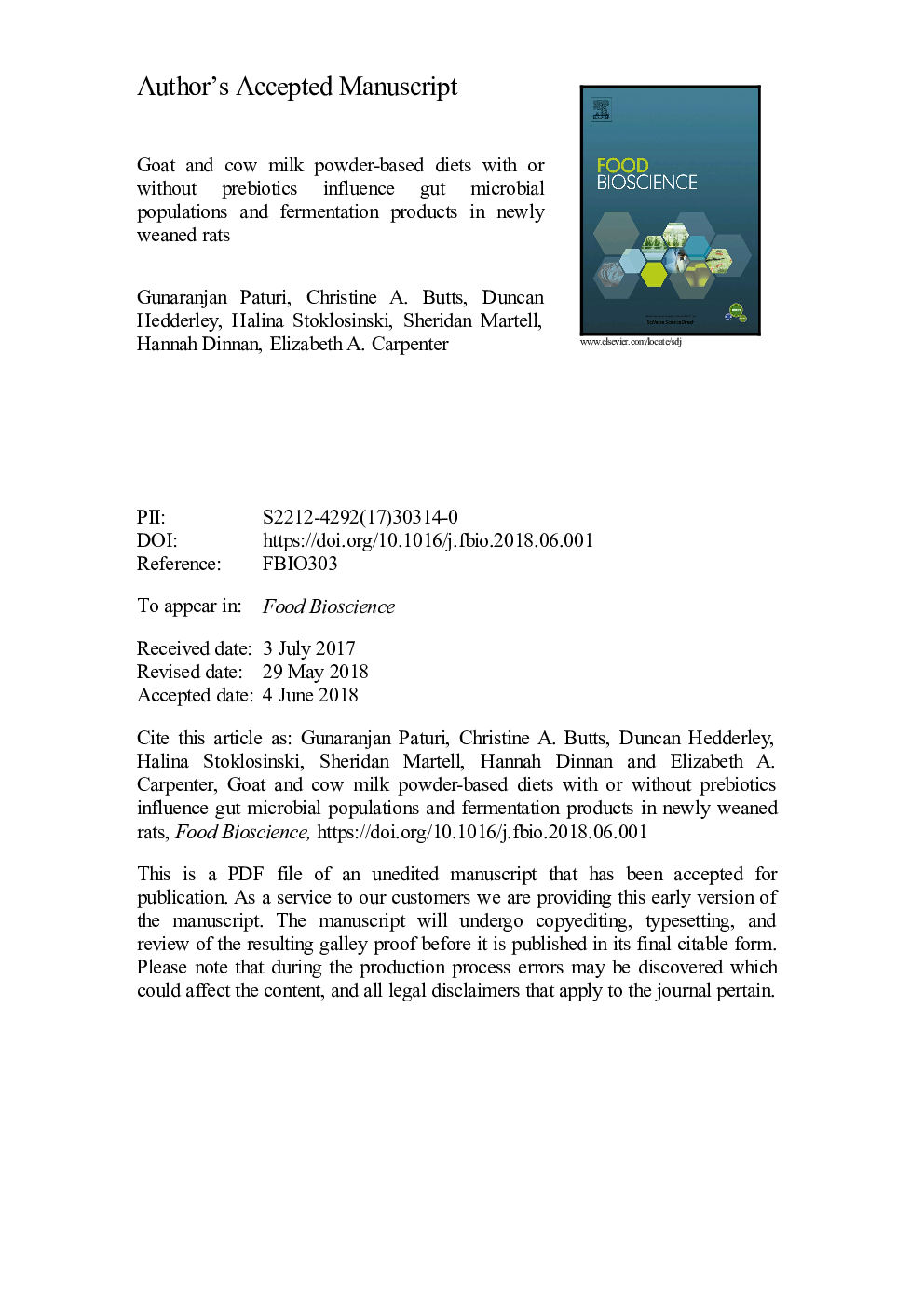| Article ID | Journal | Published Year | Pages | File Type |
|---|---|---|---|---|
| 6488766 | Food Bioscience | 2018 | 27 Pages |
Abstract
The influence of goat and cow milk powders individually and in combination with prebiotics (inulin and oligofructose) on gut microbial populations, organic acid concentrations and gut morphology were studied in newly weaned rats fed for 21 days. The abundance of bacterial populations such as the Bacteroides-Prevotella-Porphyromonas group, Bifidobacterium spp. and Lactobacillus spp. in the gastrointestinal tract (ileum, caecum or colon) of rats were influenced by goat and cow milk powder-based diets. Clostridium perfringens was decreased significantly (Pâ¯<â¯0.05) along the intestine in rats fed goat or cow milk diets. The inclusion of prebiotics into the diets significantly increased (Pâ¯<â¯0.05) the abundance of bifidobacteria in the large intestine (caecum and colon). The majority of the increases in short-chain fatty acid (SCFA; acetic, butyric and propionic acids) concentrations in the caecum and colon were observed when prebiotics were added to the diet. In both the caecum and colon, fermentation indices of SCFA were significantly lower (Pâ¯<â¯0.05) when the rats were fed goat milk diets, indicating that goat milk may have anti-inflammatory properties. There were no significant changes in the gut morphology (ileum villus length, colon crypt depth and goblet cells per crypt) of rats that consumed goat and cow milk diets. Overall, goat and cow milk powders individually and in combination with prebiotics had differential effects on gut microbiota composition and metabolism without affecting the intestinal epithelial cell architecture. These results offer a basis for dietary strategies that could be used to influence gut microbiota to achieve positive health benefits.
Related Topics
Physical Sciences and Engineering
Chemical Engineering
Bioengineering
Authors
Gunaranjan Paturi, Christine A. Butts, Duncan Hedderley, Halina Stoklosinski, Sheridan Martell, Hannah Dinnan, Elizabeth A. Carpenter,
